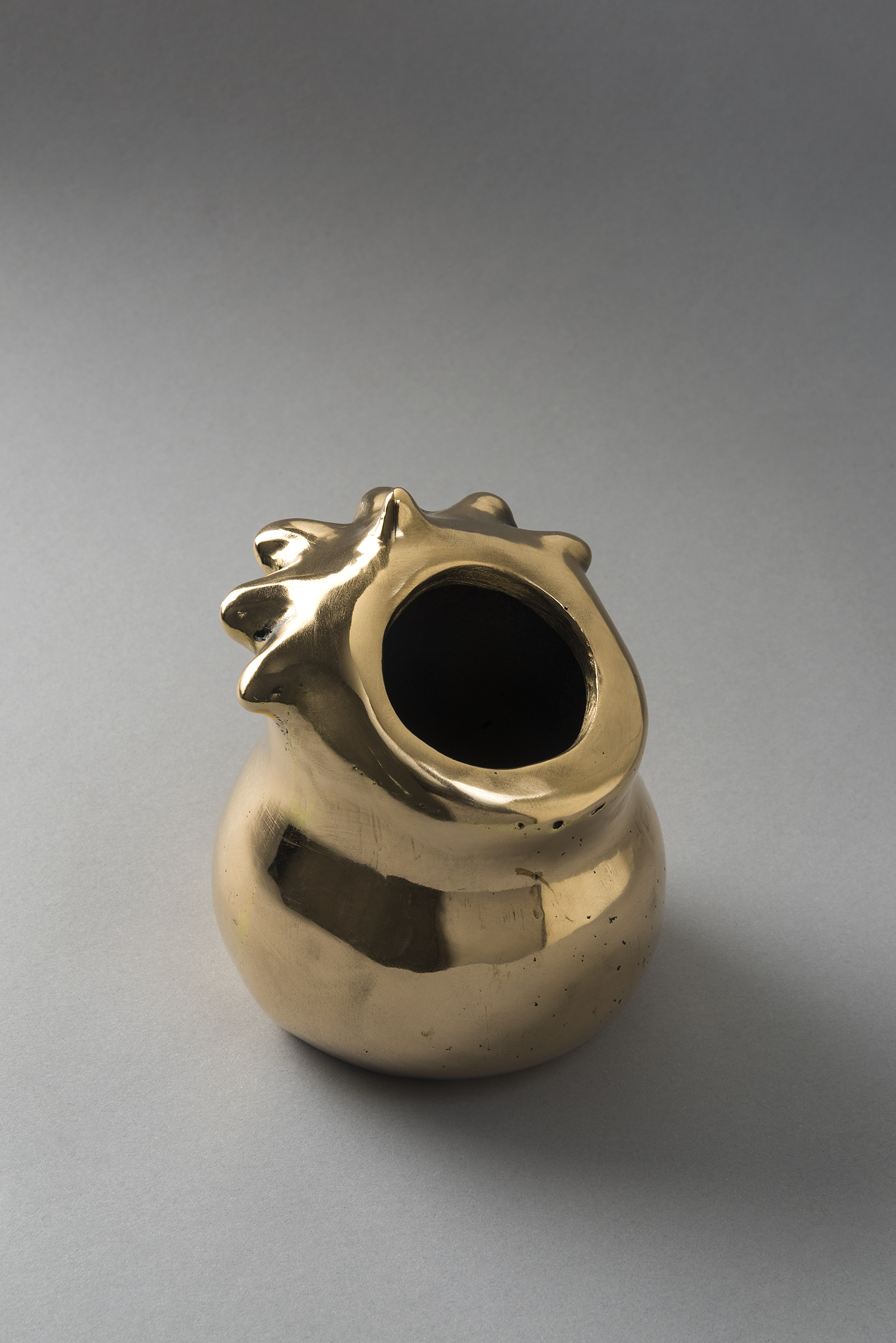Resilientes
Resilientes consiste en 100 piezas de bronce, replicas de alfarería precolombina de distintos “gritones”, nombre atribuido a estos expresivos artefactos de aspecto antropomorfo y zoomorfo caracterizados por exhibir una amplia abertura que simula una boca abierta.
Estos “gritones” o “llorones” han sido encontrados desde Mesoamérica hasta el extremo austral de Sudamérica, destacándose en la cultura Nariño (la actual frontera entre Colombia y Ecuador de VII d. C.) y la Diaguita, nordeste argentino, norte chico y valle central chileno. El origen tipológico de estas vasijas se asocia a los sapos o “suplicantes” o “gritones” en su croar, símbolos del culto al agua: representados con sus cabezas hacia el cielo y abriendo su gran hocico, acompañarían los rituales para evocar la lluvia y la fertilidad.
Curador
José Luis Blondet
Estos “gritones” o “llorones” han sido encontrados desde Mesoamérica hasta el extremo austral de Sudamérica, destacándose en la cultura Nariño (la actual frontera entre Colombia y Ecuador de VII d. C.) y la Diaguita, nordeste argentino, norte chico y valle central chileno. El origen tipológico de estas vasijas se asocia a los sapos o “suplicantes” o “gritones” en su croar, símbolos del culto al agua: representados con sus cabezas hacia el cielo y abriendo su gran hocico, acompañarían los rituales para evocar la lluvia y la fertilidad.
Curador
José Luis Blondet
Resilientes consists of 100 bronze pieces, replicas of pre-Columbian pottery of different "gritones" (screamers), the name given to these expressive artefacts with anthropomorphic and zoomorphic appearance that feature a wide opening that simulates an open mouth.
These "gritones" or "llorones" (cryers) have been found from Mesoamerica to the southern tip of South America, especially in the Nariño culture (on the present border between Colombia and Ecuador of the 7th century A.D.) and the Diaguita culture, of northeastern Argentina and the north-central and central valley of Chile. The typological origin of these vessels is associated with frogs, or "supplicants" or "screamers" in their croaking, symbols of a water cult. Represented with their heads towards the sky and opening their great snout, they would accompany rituals to bring rain and fertility.
These "gritones" or "llorones" (cryers) have been found from Mesoamerica to the southern tip of South America, especially in the Nariño culture (on the present border between Colombia and Ecuador of the 7th century A.D.) and the Diaguita culture, of northeastern Argentina and the north-central and central valley of Chile. The typological origin of these vessels is associated with frogs, or "supplicants" or "screamers" in their croaking, symbols of a water cult. Represented with their heads towards the sky and opening their great snout, they would accompany rituals to bring rain and fertility.
 LACMA | Los Angeles County Museum of Art – Los Angeles, E.E.U.U.
LACMA | Los Angeles County Museum of Art – Los Angeles, E.E.U.U.












